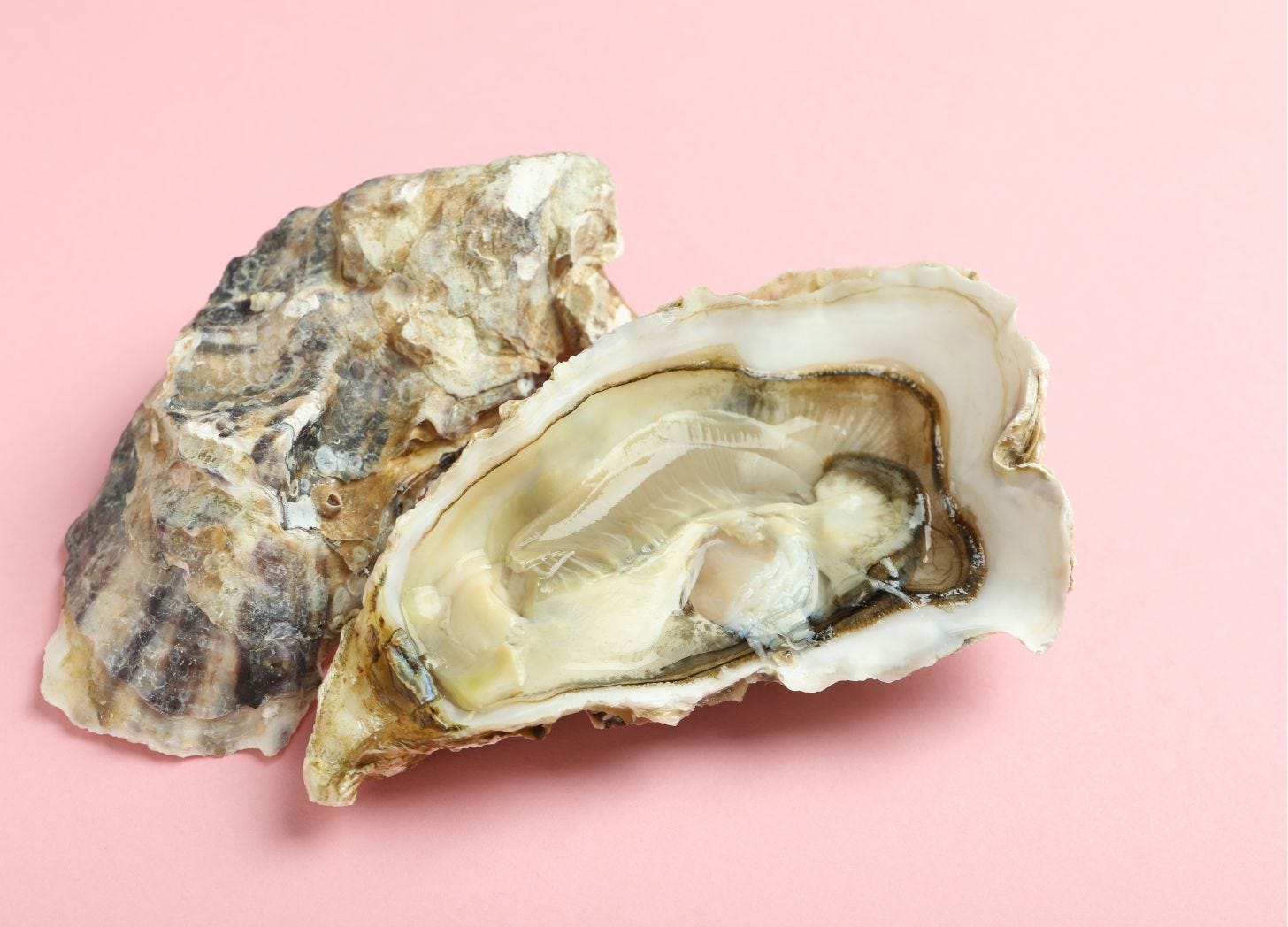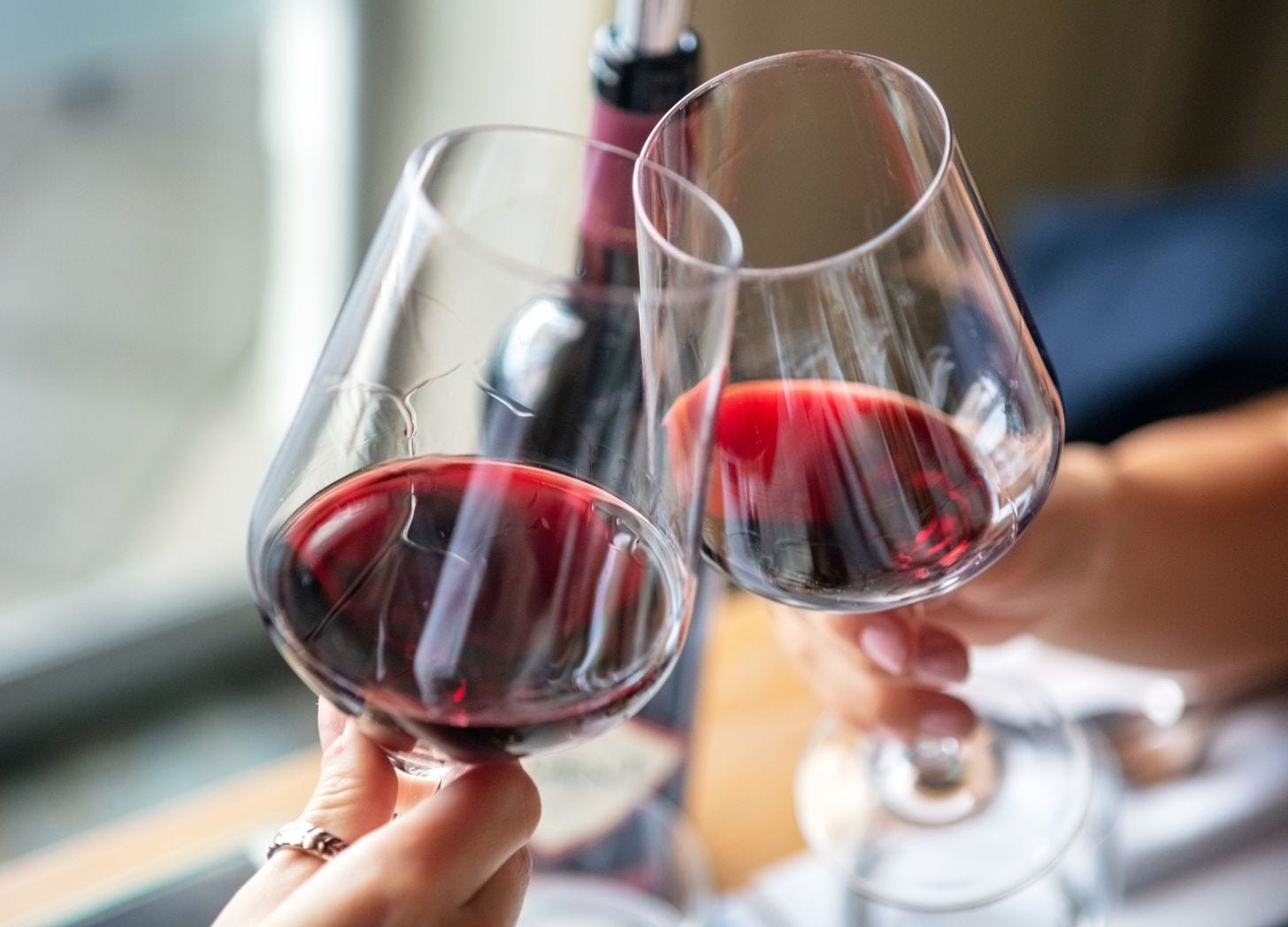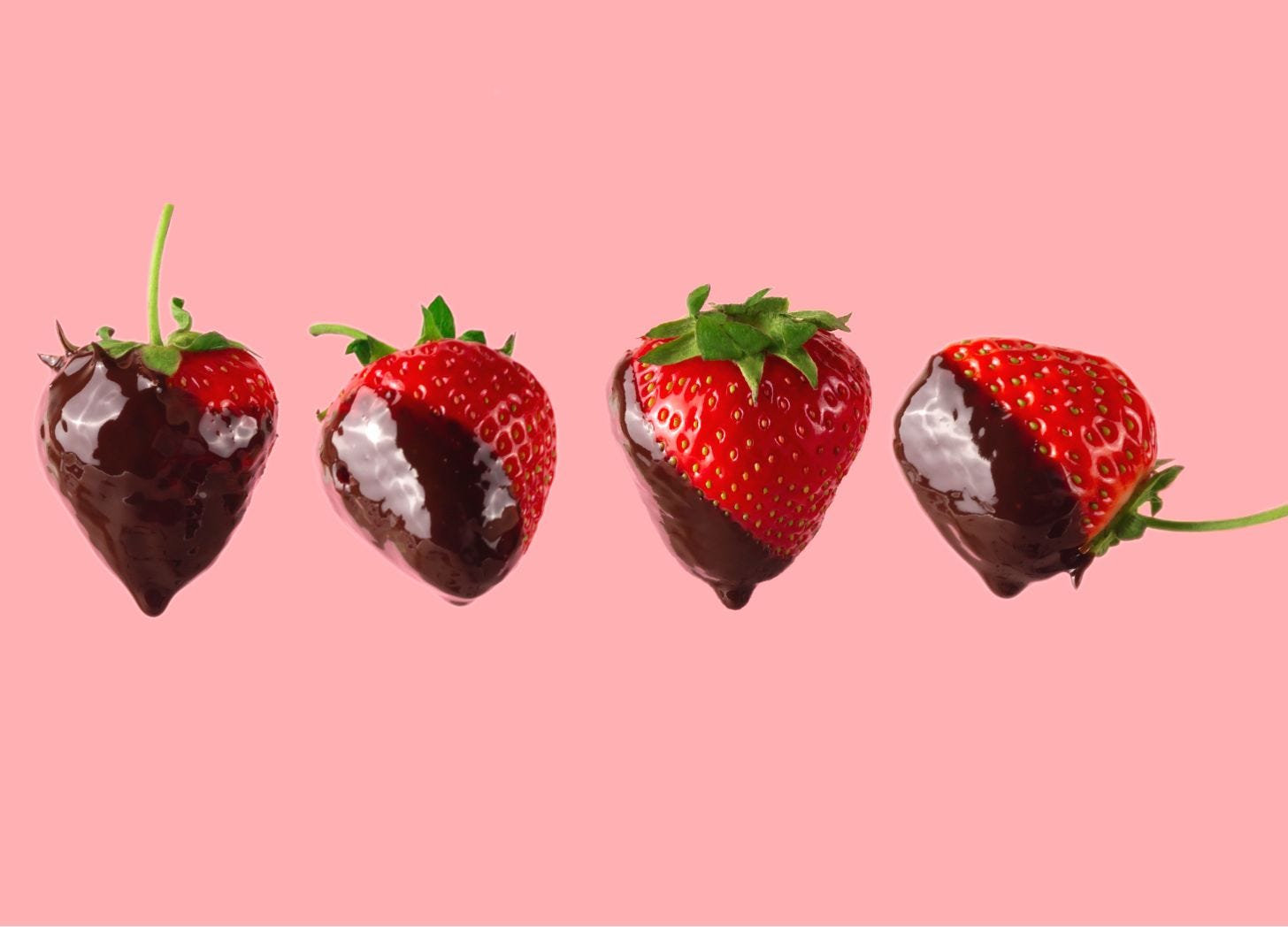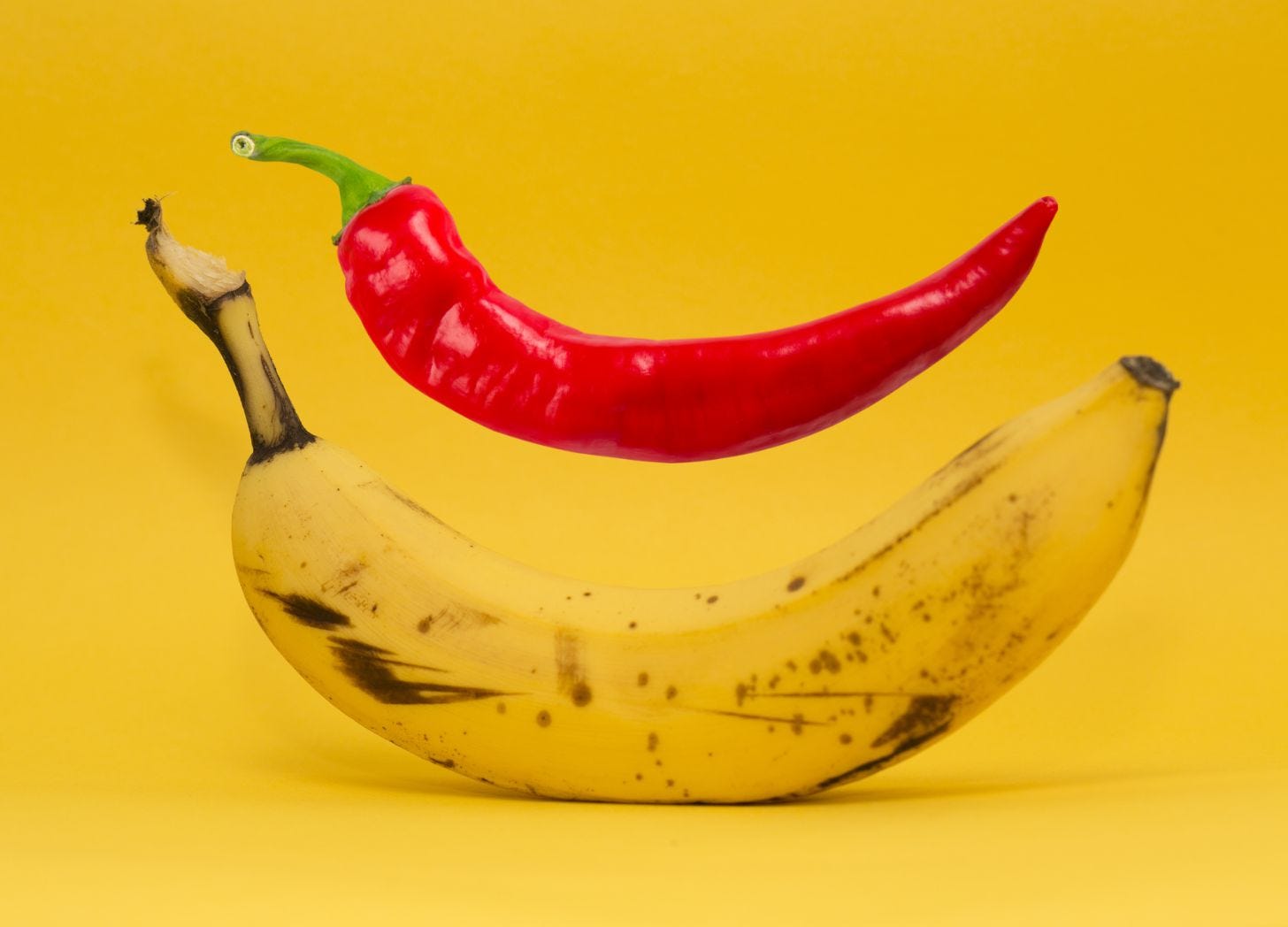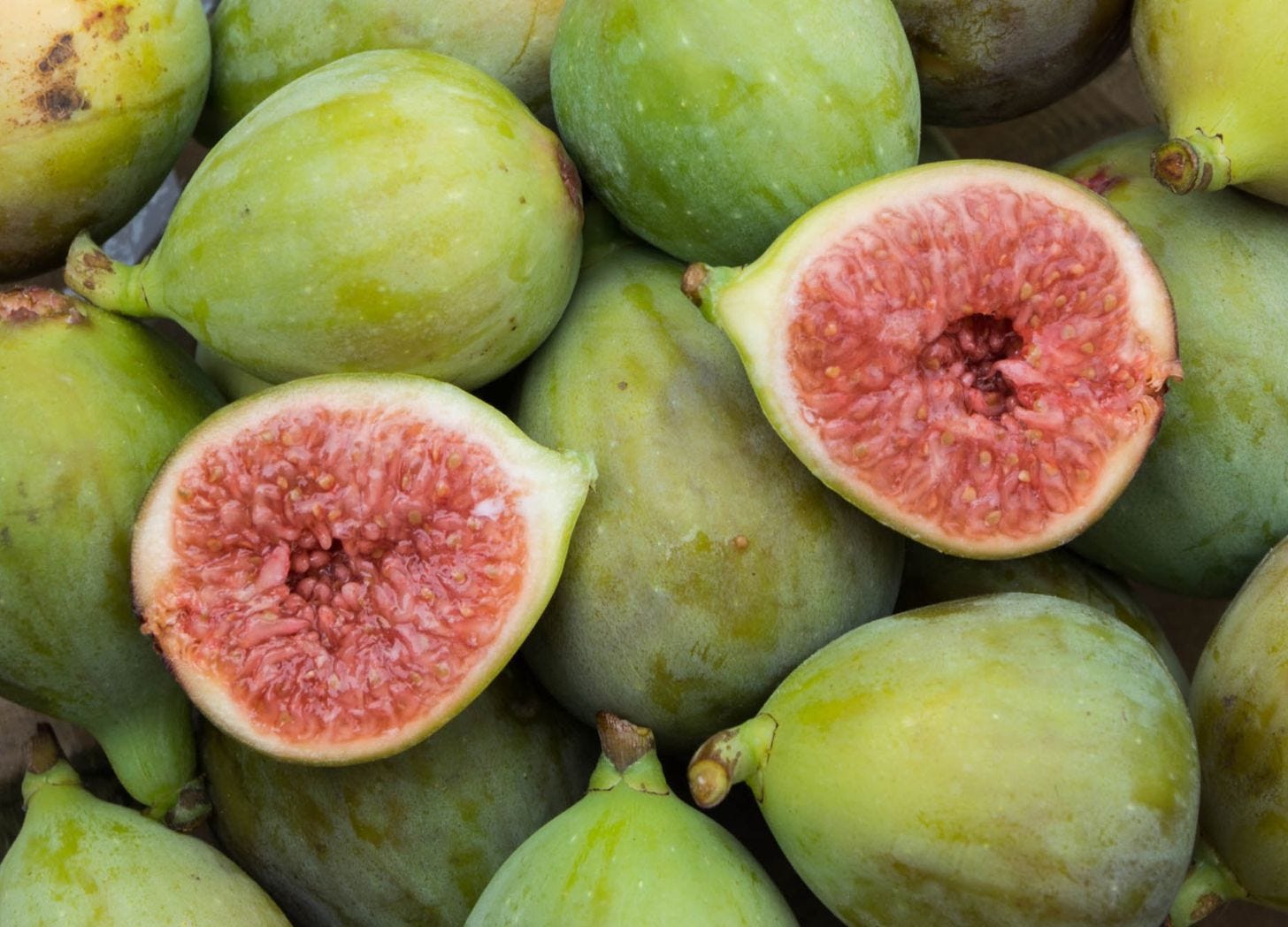Real Life Love Potions
Science-based or suggestive? On chemical attraction, aphrodisiacs, and how to spice up your love life in the kitchen.
We’ve Got Chemistry.
The insatiable magnetism that draws two people together has certainly been romanticized, but there is actual evidence of real chemistry when it comes to sexual attraction.
Major Histocompatibility Complex (MHC) molecules produced by our bodies help the antigenic immune system recognize foreign substances (like viruses or allergens), while protecting our own cells.
The more diverse our MHC molecules, the more effectively our immune system works. The animal kingdom has evolved to seek sexual partners with MHCs that differ from our own.
MHC-based attraction is alleged detected through body odor, completely subconsciously. But don’t toss your deodorant just yet!
The “Sweaty T-Shirt Study”
In the 1995, Swiss scientists Claus Wedekind had men wear a t-shirt for two days. Women smelled the shirts and rated them for sexual attraction. The results showed a distinct preference for men whose MHCs were different from their own.
Our sense of smell has the power to evoke intense emotional responses and several neurobiological factors come into play.
Sweat may reveal poor hygiene, a reflection of a person’s wellbeing at a molecular level. Evolutionarily, not someone you want to go bed with.
Receptors in our noses (plus a few in the back of our throats) send signals to the brain—specifically the amygdala, the most primitive part of our brain, and integral to the limbic system (fight or flight).
Sweat may reveal poor hygiene, a reflection of a person’s wellbeing at a molecular level. Evolutionarily, not someone you want to go bed with.
A familiar scent can provoke nostalgia, comfort, and safety or trigger revulsion because scent and memory are inextricably linked.
Marco, if you’re reading this, it wasn’t you. It was the Armani Acqua di Giò.
It’s Biology, Baby.
Certain foods and drinks have the potential to stimulate the appetite in more ways than one. And there’s real science behind it.
Tales of love potions and secret spells spill from the pages of ancient mythology.
Venus, the Roman Goddess of love created magical blend of rosemary, thyme, and rose petals guaranteed to get hearts racing.
Cleopatra was known for her honey-milk baths, and allegedly anointed herself in rose water, cinnamon, and myrrh.
Fragrant jasmine and rose, as well as honey show up in Haitian Voodoo, along with roots and herbs.
Love Songs
Music teems with references to aphrodisiacs, most famously, Love Potion No. 9, as first performed by the Clovers. Check out nine versions of the song here.
I Put a Spell on You, first written and performed by Screamin’ Jay Hawkings and popularized by Nina Simone, has been covered relentlessly. Some versions of the saucy song work as an audible aphrodisiac. I’m partial to Seal’s version.
What is an aphrodisiac?
Greek goddess Aphrodite is at the heart of the word ἀϕροδισιακός (afrodisiakós): Greek for ‘sexual.’
It’s an adjective, as it is in other languages, but we use is as noun too. For example: After sharing a perfect aphrodisiac of dozen oysters and a glass of champagne, it’s no surprise we went home together.
Do aphrodisiacs exist?
While largely folkloric, there is some science to explain why some common fruits, roots, vegetables, herbs, and spices make our hearts race.
In other cases, the look, scent, and texture of certain ingredients can stimulate an association that gets our pulses racing. The dirtier your mind, the more effective these associative, or suggestive aphrodisiacs will be.
Read on for a sexy shopping list.
Red Red Wine (and Spirits)
Alcohol consumption of any type is known make us weak in the knees. The key is moderation.
One step over the edge and a combination of dehydration and an imbalance of vasodilation, which promotes blood flow to the “area” and vasoconstriction, which does the opposite. Lowered blood pressure will keep things, well…low.
Alcohol also works as a depressant to the nervous system, which can lead to decreased sensitivity where it counts.
Red Wine, especially dark-colored, and highly tannic wines like Aglianico, Sagrantino, Cabernet Sauvignon, and Cannonau are known to contain higher levels of antioxidant polyphenols, which promote healthy blood flow.
Red wine is a suggestive aphrodisiac for its deep-red color that actually makes some people blush.
Lastly, oak-aged red wines often have a beautiful spicy spectrum of aromas like cayenne, black pepper, cinnamon, and cloves, all of which are known stimulate the senses. Musky, earthy, and woody aromas are also thought to appealing to females, which would explain their pervasive use in “masculine” perfumery.
Saffron
Prized for its heady aromas and mouthwatering, almost animalic qualities, saffron is justifiably pricey. It also requires a meticulous harvest. Saffron Crocus flowers produce only three stigmas (the long red strands we call saffron) per flower.
Flower anatomy is fascinating, and a bit aphrodisiac… you were warned.
The science: Saffron contains serotonin-boosting compounds, crocin and safranal. It’s also rich in antioxidants, aka, healthy blood flow. Natural medicine has prescribed saffron for “romance” for centuries.
Truffles
Another precious commodity, truffles emit an earthy, warm and musky scent. It’s so potent that dogs and pigs are able to locate the spores deep underground.
The Science: Truffles contain androstenone, a sex pheromone that signals a male pig’s sexual readiness. Pigs found the scent so irresistible.
Chocolate
Rich in antioxidants, chocolate is a renowned mood booster (serotonin) and better if it’s dark. Chocolate hearts for V-Day? Coincidence? I think not.
Strawberries
A chocolate-dipped strawberry might be the key to snagging your next heartthrob. Their heart-shaped appearance and blood-red color is suggestive on its own. Sliced in half, it takes little imagination to make a “female” association.
Fragolina, Italian for ‘little strawberry,’ is also slang for said body part.
The Science: High in vitamin C, flavonoids, and antixidants, these pretty berries will get your blood flowing.
My tried-and-true flourless chocolate aphrodisiac cake with strawberry puts these and more to the test… Find the recipe here.
Oysters
In keeping with our anatomical association theme, there’s no greater example than the oyster. Their resemblance to lady parts is undeniable. Their familiar texture and mouthwatering quality are quintessentially sensual.
The Science: Oysters are high in zinc, key testosterone and libido booster.
Ginger
Ginger is a staple in Ayurveda for its warm and stimulating properties.
The Science: Vasodilation. Ginger contains gingerol and shogaol, which help relax blood vessels and improve the flow of blood to exactly where you need it.
Hot Red Pepper
Packed with capsaicin, which increases the heart rate and stimulates endorphins which promotes excitement and blood flow needed to consummate it.
Bananas
Bananas fall into a similar category when it comes anatomical resemblance, but their power lies in their vitamin and mineral properties. The go-to distance runners’ refuel is packed with potassium and B vitamins, both believed to boost energy as well as sexual health and performance.
Honey
With its heady and sometimes musky aromas, honey has been on the aphrodisiac list for millennia.
The Science: Honey contains the boron, a mineral-rich metalloid which helps balance hormones and increases energy by facilitating the absorption of vital potassium, calcium, and magnesium. Boron is also thought to influence the production of sex hormones.
Figs
Also known for their resemblance to female anatomy, and the most popular Italian slang word for it (fica), fresh figs are one of the world’s most sensually stimulating fruits.
The Science: Figs contain amino acids, believed to enhance sexual stamina.
Almonds
Almonds appear throughout ancient art and iconography as a symbol of fertility.
The ancient Romans associated almonds with fertility and prosperity. They were often used in bridal ceremonies, which explains why so many cultures today serve candied almonds at weddings.
In ancient Hebrew culture, the almond tree was linked to fertility goddesses and the fertility of the earth. The blooming of the almond tree in early spring was seen as a sign of renewed life and the potential for new life and growth.
The Science: Almonds contain essential fatty acids and antioxidant vitamin E.
Pomegranate
The bright red seeds and piquant juice of the pomegranate are a strikingly sensual combination. Pomegranates have long been associated with the cycle of life. Persephone, who was fated to return to the underworld biannually, apparently snacked on pomegranates.
A symbol of life, love, and prosperity across Mediterranean and Middle Eastern cultures, they’ve also found their way into the cuisine.
The Science: Full of antioxidants, believed to increase blood flow and improve erectile function.



